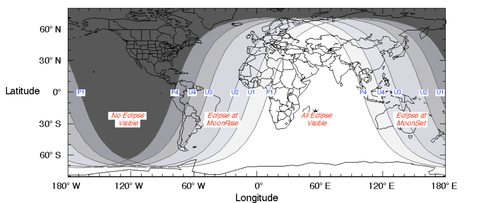BLOOD MOONNN 2DAY...27th July....
July 2018 lunar eclipse
A total lunar eclipse will occur on July 27, 2018. The Moon will pass through the centreof the Earth's shadow. This will be the first central lunar eclipse since June 15, 2011.
Since it will occur near apogee, this eclipse will also be the longest total lunar eclipse in the 21st century. Totality will last approximately 103 minutes.[1]
This eclipse will be the second total lunar eclipse in 2018, after the one in January. The eclipse will occur simultaneously with the perihelic opposition of Mars, a coincidence that happens once every 25,000 years.
Visibility
It will be completely visible over Eastern Africa, and Central Asia, seen rising over South America, Western Africa, and Europe, and setting over Eastern Asia, and Australia.[3]
Background
Background
A lunar eclipse occurs when the Moon passes within Earth's umbra (shadow). As the eclipse begins, Earth's shadow first darkens the Moon slightly. Then, the shadow begins to "cover" part of the Moon, turning it a dark red-brown color (typically – the color can vary based on atmospheric conditions). The Moon appears to be reddish because of Rayleigh scattering(the same effect that causes sunsets to appear reddish) and the refraction of that light by Earth's atmosphere into its umbra.[4]
The following simulation shows the approximate appearance of the Moon passing through Earth's shadow. The Moon's brightness is exaggerated within the umbral shadow. The northern portion of the Moon was closest to the center of the shadow, making it darkest, and most red in appearance.
A lunar eclipse occurs when the Moon passes within Earth's umbra (shadow). As the eclipse begins, Earth's shadow first darkens the Moon slightly. Then, the shadow begins to "cover" part of the Moon, turning it a dark red-brown color (typically – the color can vary based on atmospheric conditions). The Moon appears to be reddish because of Rayleigh scattering(the same effect that causes sunsets to appear reddish) and the refraction of that light by Earth's atmosphere into its umbra.[4]
The following simulation shows the approximate appearance of the Moon passing through Earth's shadow. The Moon's brightness is exaggerated within the umbral shadow. The northern portion of the Moon was closest to the center of the shadow, making it darkest, and most red in appearance.




Comments
Post a Comment